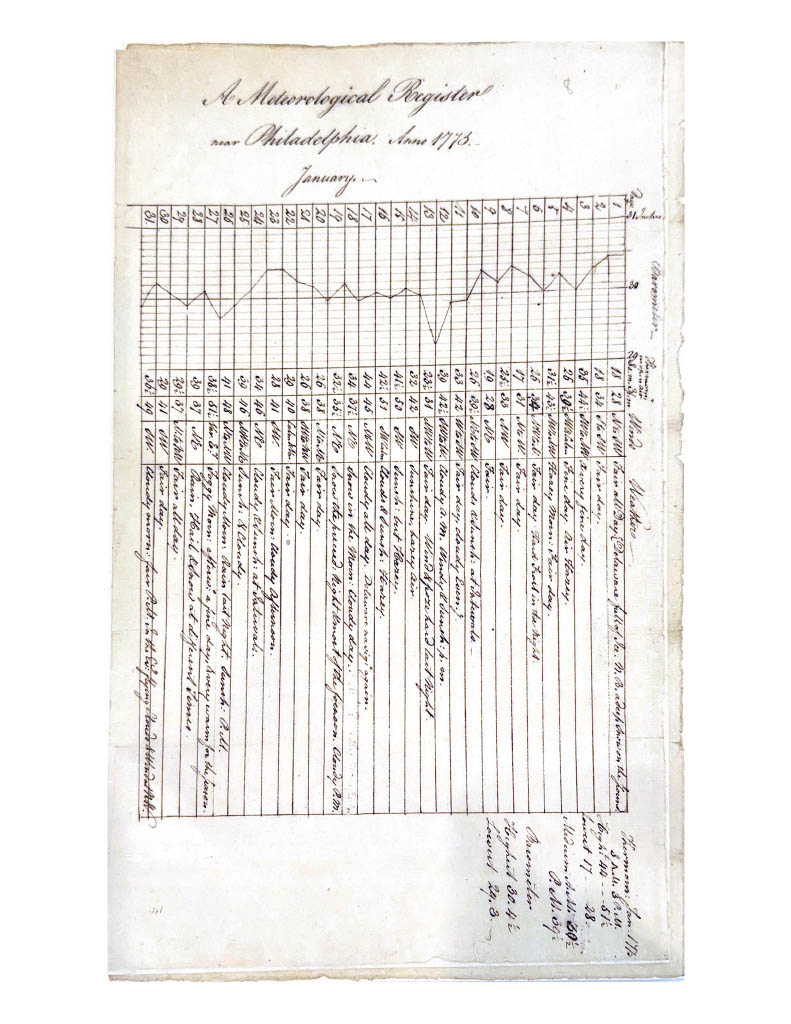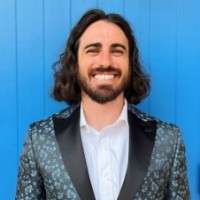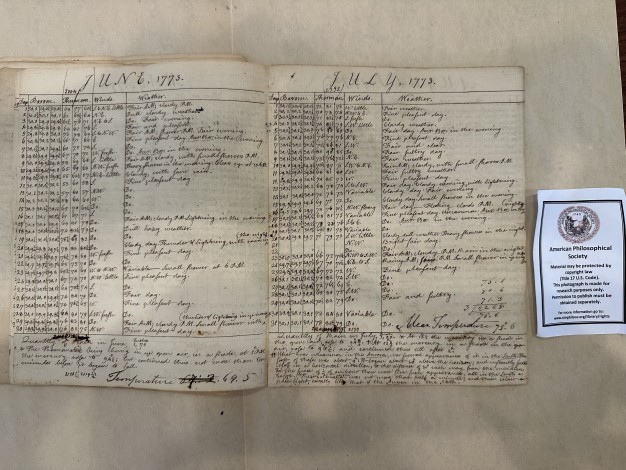Climate Anxiety and Climate Ambition in 18th-Century Philadelphia
In a note attached to his 1771 meteorological observations, the New England Reverend Samuel Williams outlined his vision for American meteorology:
If we had meteorological diaries taken in the different North American Colonies, they might be of use to point out the origin, order, and extent of the winds; the several changes and variations of the seasons; their influence and effect in causing and removing disorders; the present state, and any future alterations of the climate…we have as yet but few accurate observations in America.
Williams was not alone in calling for widespread, reliable weather observations across Britain’s North American colonies. Questions about weather and calls for accurate, reliable observations recur throughout the early minute books of American Philosophical Society and its predecessors, leading to the installation of a rain gauge and other meteorological instruments on Philosophical Hall.
Efforts to measure and track both weather and larger climatic patterns were pressing and practical concerns for 18th-century Philadelphians. In 1766, the influential Philadelphia physician Thomas Bond outlined a plan to Pennsylvania Hospital’s Board of Managers and physicians to improve medical practice through a series of lectures and clinical observations. Climate and weather were at the core of his program. “Every climate produces diseases peculiar to itself,” he noted, and while Philadelphia’s climate was not uniquely unhealthy, mismanagement of the city’s atmosphere and lack of vigilance for disease aboard incoming vessels left it at risk of epidemics. Bond pledged to install “a complete Meteorological Apparatus, & endeavour to inform you of all the known Properties of the Atmosphere which surrounds us.” Producing “an Exact register of the Weather, & of the prevailing Diseases” would confirm their relationship and allow physicians and city leaders to prevent, or at least to mitigate, epidemics.

Bond wrote from a position of confidence—he claimed that the City Commissioners’ efforts to cover Dock Creek and to pave the streets had already removed disease sources, and that future innovations would prove even more beneficial. By the end of the century, however, repeated yellow fever outbreaks in the 1790s, continued uncertainty about if or how climate was changing, and uncertainty about the relationship between daily weather and disease led to more extreme plans. In a 1798 letter to the APS, sent via Thomas Jefferson, the engineer Charles Varlé proposed a plan to artificially manage weather in Philadelphia by placing “large canvas sails to agitate air currents” in streets with stagnant air and to produce “artificial rain” through a series of suspended hoses connected to the city’s pumps and wells that would absorb “putrifying exhalations.”
As cities like Phoenix experiment with technologies to mitigate extreme, deadly urban heat, materials in the APS collections show that anxieties about extreme weather and public health, as well as efforts to find technological fixes to heat, have a longer history.


